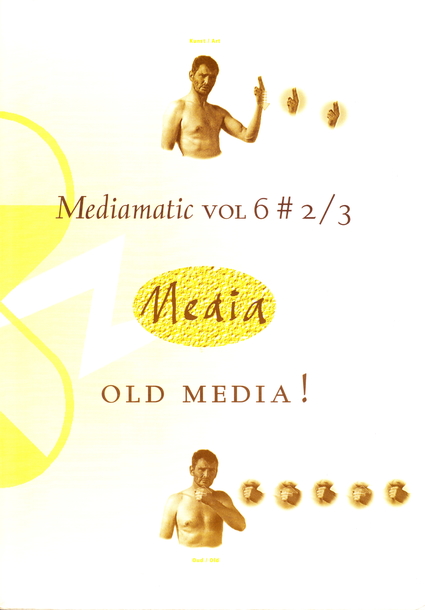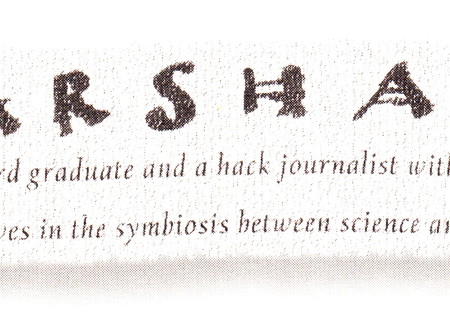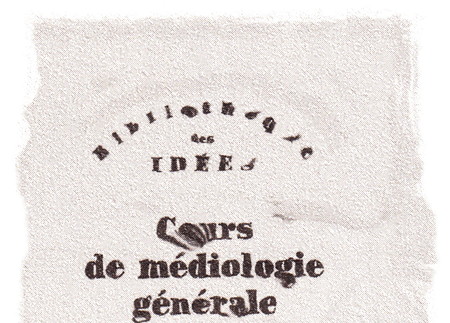It is an 'ideogram' (actually 'ideogesture') language, like written Chinese, for example, which is not based on the sounds of spoken Chinese. In the same way, deaf sign languages are not directly related to the languages spoken or written in the area. There are signs without an equivalent in spoken language and words for which deaf people have no corresponding sign. While there are manual alphabets, with which deaf people can spell words from the spoken language, they are used only as an occassional, supplementary aid. Sign languages emerged in the same way as spoken languages and are just as varied. Apparently, the language capacity of human beings is largely independent of hearing or speaking and is present on a more abstract level.
Sign languages have a structure of their own. Western spoken language encodes much of its meaning in the order of words in a sentence, and cannot express very much without time-indicators (the verb must be conjugated). Sign languages, on the other hand, have a fundamentally 'spatial' grammar. It is practically impossible to sign something coherently without first assigning the elements of the message a place within the 'sign space' (the space defined by the reach of one's hands). Not only do hand gestures playa role; so does the direction of one's gaze and the expression of one's upper body as a whole. The elements of a discourse also remain in the sign space after they have been gestured, accessible for further interaction. Even time is converted into space; the past has a different location than the present or future.
Deaf sign languages are a fascinating area for those who study the language of images. One can discuss, create poetry or teach in them. What would a sign philosophy oflanguage be like? Would a deaf Wittgenstein have wrestled with the same questions? What would the consequences of the spatial structure of deaf sign language have been for his thinking? And could it then have been translated into German? What would the significance of such a philosophy have been for the theory of other visual media?
Sign language is the oldest time-based visual medium. Only in recent decades have those with a normal sense of hearing begun to realize that deaf sign language is not simply a 'crutch'; it is a medium of communication in its own right, with countless variations all over the world.

Documents
-

Mediamatic Magazine Vol. 6#2/3 1 Jan 1991
MacKitsch
About Painter 1.0
The headings in this issue of Mediamatic were painted with the computer program Painter (version 1.0, @ 1991, Fractal Design Corporation). It is at once one of the most splendid and most vacuous...
-

Mediamatic Magazine Vol. 6#2/3 Willem Velthoven 1 Jan 1991
Fine Art Makes New Media Old
The Art of the Livin' Dead
The sex of Fine Art, the mother of that art, is the financial object, an attractive thing. The object carries the content-value. in the nineteenth century, through the notion of l'Art pour l'Art
-

Mediamatic Magazine Vol. 6#2/3 1 Jan 1991
Media Scapes
A written survey among our friends on their use of old and new media in daily life
Next to product comparisons which assure us of a future which is constantly renewing itself, reflections on the acquisition of the past and the place the older media occupy in our minds might at...
-

Mediamatic Magazine Vol. 6#2/3 1 Jan 1991
Fawcett
Over-Stressed
Brian Fawcett is a Canadian writer and journalist. The author of Cambodia and the Public Eye, two pessimistic books about media and society, that in their form redefine the book as a medium itself.
-

Mediamatic Magazine Vol. 6#2/3 Bert Mulder 1 Jan 1991
Media, Information & Me
Difference
Bert Mulder is a pioneer in computer-supported cooperative work. He works at Veronica Broadcasting Company and is currently learning Chinese in order to read Confucius.
-

Mediamatic Magazine Vol. 6#2/3 Joost Niemöller 1 Jan 1991
Niemöller
Revenge
Joost Niemöller is the soft-voiced, mild-mannered author of the novel Revenge. He is currently writer in residence at the University of Texas, Austin
-

Mediamatic Magazine Vol. 6#2/3 Remko Scha 1 Jan 1991
Scha
Computer – Language
Remko Scha is a Dutch artist and scientist who is experimenting with speech and computers.
-

Mediamatic Magazine Vol. 6#2/3 Brian Reynolds 1 Jan 1991
Reynolds
Rain
Brian Reynolds has been asked by Gruppo Feruzzi to turn his farm into the most technologically sophisticated in England.
-

Mediamatic Magazine Vol. 6#2/3 Timo Prusti 1 Jan 1991
Prusti
Stars
Timo Prusti is a Finnish astronomer who is specialised in star formation.He currently works at the Osservatore Astrofisico di Arcetri, Firenze
-

Mediamatic Magazine Vol. 6#2/3 Alfred Birnbaum 1 Jan 1991
Birnbaum
Humour
Alfred Birnbaum is an American telematic nomad and polyglot, who works as a writer, translator and artist. Most of the time he hovers around Asia.
-

Mediamatic Magazine Vol. 6#2/3 Pim Fortuyn 1 Jan 1991
Fortuyn
Well gestured
Prof W.S.P.Fortuyn was responsible for the free public transport network for students in Holland. Prof. Fortuyn was a converted Marxist who called himself an adviser in political and strategic...
-

Mediamatic Magazine Vol. 6#2/3 Anne-Mie van Kerckhoven 1 Jan 1991
Kerckhoven
Dream
Annemie van Kerckhoven is a Belgian artist who wears her politics on her panties.
-

Mediamatic Magazine Vol. 6#2/3 Koos Dalstra 1 Jan 1991
Dalstra
Deceit
Koos Dalstra is a Friesian poet and a cheat.
-

Mediamatic Magazine Vol. 6#2/3 Jules Marshall 1 Jan 1991
Marshall
Death
Jules Marshall is an Osford graduate and a hack journalist wih ideas above his station. He believes in the symbiosis between science and art.
-

Mediamatic Magazine Vol. 6#2/3 Adilkno 1 Jan 1991
ADILKNO
Academy
ADILKNO is the Dutch society for the advancement of illegal knowledge.
-

Mediamatic Magazine Vol. 6#2/3 Fred Wagemans 1 Jan 1991
More and Bigger, the Same and Less
Questions and Remarks concerning the Present and the Future
The Museum Fodor is an art gallery without a collection and it is a unique establishment. There is a permanent pot for its expenses in the budget of the Amsterdam City Council and equally fixed is...
-

Mediamatic Magazine Vol. 6#2/3 1 Jan 1991
the Telephone Book
The telephone rings. Yes? Telephony originates from this hesitating acceptance. Taking a call means making oneself answerable. This is the point of departure for The Telephone Book, produced by...
-

Mediamatic Magazine Vol. 6#2/3 Peter Fend 1 Jan 1991
If You're Not Engaged in History you're not…
Questions and Remarks concerning the Present and the Future
My career began in 1977 when John Gibson, then famous for his commissioning of large artists' projects, told patron Maya Hoffmann and artist Dennis Oppenheim that he would not work on getting an...
-

Mediamatic Magazine Vol. 6#2/3 Mark Madel 21 Dec 1992
Museum: Friend or Foe?
Questions and Remarks concerning the Present and the Future
99% of all the art in all the art museums around the world should be immediately removed and burnt (in environmentally-safe power generators) to provide electrical power for the planet for an hour or...
-

Mediamatic Magazine Vol. 6#2/3 Paul Perry 1 Jan 1991
New Collector
It was August and a terrible month. Would new pleasure keep growing and burst red? The salmon ascended rivers, jumping stones. Leap frogging the tall trees, fallen long ago. Leaves gone, trunk...
-

Mediamatic Magazine Vol. 6#2/3 Albert Kuiper 1 Jan 1991
Words about Art
A museum has various tasks within the cultural field. We tend to associate a museum with collecting, conserving and exhibiting works of art. But its task to exhibit material evidence can also be...
-

Mediamatic Magazine Vol. 6#2/3 Ruud Nederveen 1 Jan 1991
The Fodor Cycle
Alternative Approaches to Financing Museums
If the question is asked of the methods a museum can adopt to raise the funds needed to carry out its function, a couple of things should first be clarified. First of all it should be stated that we...
-

Mediamatic Magazine Vol. 6#2/3 Paul Groot 1 Jan 1991
On Redesigning the Museumplein as a Dream Area
The Stedelijk Museum as a Virtual Museum
I would first like to mention two events, La Grande Parade' and Ulay & Marina's Amsterdam part of the series Nightsea Crossing'. La Grande Parade was the huge exhibition to mark Edy de Wilde's...
-

Mediamatic Magazine Vol. 6#2/3 Geert Lovink, Bas Jan Stam 1 Jan 1991
The Souring of the Old Arts
Discomfort in the Media in Steiner and Syberberg
'Who are you?' 'Oh. Sorry.' He handed Zoyd a card that read. DR. DENNIS DEEPLY, M.S.W., PH.D. NATIONAL ENDOWMENT FOR VIDEO EDUCATION AND REHABILITATION: someplace down north of Santa Barbara. a...
-

Mediamatic Magazine Vol. 6#2/3 Avital Ronell 1 Jan 1991
The Telephone Book
The Telephone Book. Technology Schizophrenia Electric Speech AVITAL RONELL, University of Nebraska Press (pub), 1989, ISBN 0-8032-8938-3, English text.pp. 465
-

Mediamatic Magazine Vol. 6#2/3 Lex Wouterloot 1 Jan 1991
Cours de Médiologie Génerale
Régis DeBray, Éditions Gallimard, Paris 1991, ISBN 2-07-072292-9, FRENCH TEXT, PP. 395, FF 120
-

Mediamatic Magazine Vol. 6#2/3 Paul Groot, Needleman, Raphael 1 Jan 1991
Byte
Byte volume ]6, no. 6, June 1991, FRED LAl'OGA (cd) McGraw-Hill (pub), us 1991, subscription rate $29.95 per yea